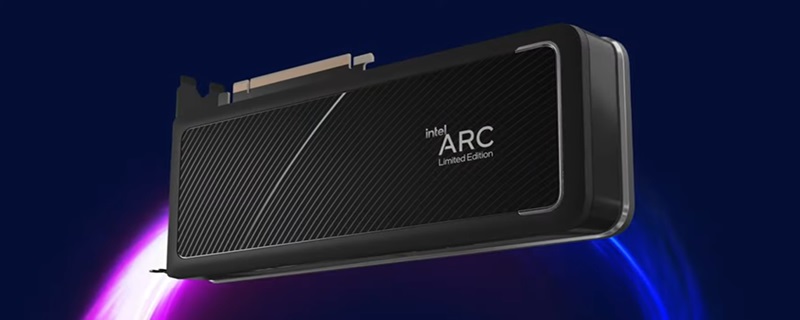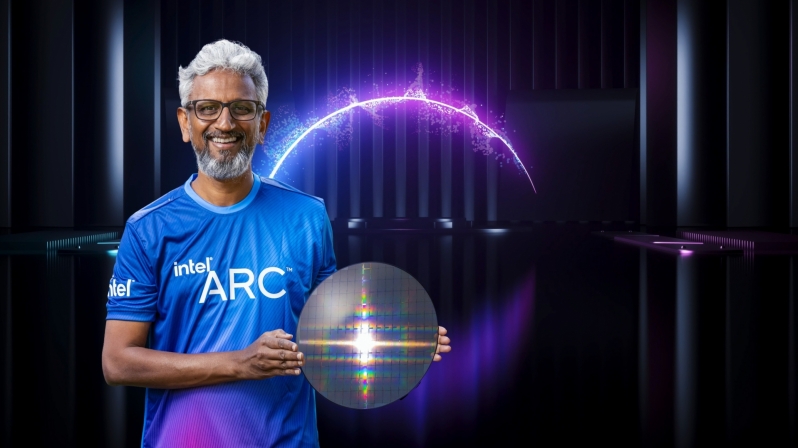Was Intel’s ARC “Failure” Raja’s fault?
Was ARC a failure? And does Raja deserve the hate he gets online?
It was announced yesterday that Raja Koduri will be leaving Intel after over five years of service. Raja Koduri is most famous for his efforts within the GPU market, having been one of the leaders behind Intel’s ARC series of discrete graphics cards and the head of AMD’s Radeon Technologies Group before his time at Intel. Before that, Raja also worked at Apple, acting as the director of Apple’s graphics architecture between 2009 and 2013.
For the past decade, Raja Koduri has lead the GPU divisions of both AMD and Intel, and has done so at difficult times for both companies. Raja Koduri lead Radeon while AMD was strapped for cash, with the failure of their Bulldozer series of CPU placing the company in a dire position. Raja lead Radeon at a challenging time and re-organised AMD’s GPU division with plans to improve their drivers and re-work AMD’s hardware roadmap.Â
Under Raja, AMD launched Polaris, oversaw the change from AMD/ATI’s Catalyst drivers to Radeon Software Crimson Edition (and later Adrenalin Edition), and later launched AMD Vega series of graphics cards. While Raja left AMD in 2017 to join Intel (with a short sabbatical in-between), Koduri’s roadmap for Radeon is what lead to RDNA, the series of graphics architectures that had seen AMD re-enter the high-end of the GPU market.
Raja Koduri joined Intel to bring the company into the discrete GPU market and to create high-end accelerators for the server market. Given the complexity of these products, and the fact that nobody has entered the discrete GPU market successfully in over two decades, this was difficult task for Intel, even with the help of industry experts like Raja Koduri.Â
Tough jobs at tough times
During Raja’s time at Intel, the company has had three CEOs and has suffered greatly from the delays of their 10nm (Now Intel 7) process node. This time saw Intel release Skylake, Kaby Lake, Coffee Lake, Coffee Lake-R (Refresh). Comet Lake, and Rocket Lake using different variants of their their 14nm lithography node, and saw Intel lose their dominant position within the x86 CPU market.Â
The past five years have been difficult for Intel, and during this time Raja worked to create new discrete graphics solutions from the ground up. Yes, Intel had integrated graphics solutions, but to create a compelling discrete GPU for gamers and high-end accelerators for servers, Intel’s graphics solutions needed more than a simple scale up. Creating discrete Intel GPUs is not an easy task.
Similarly, when Raja was at AMD, AMD were suffering from financial troubles. AMD did not have the budget to rival Nvidia in the GPU market, and a lot of money and time was being spent to create their Zen CPU architecture and roadmap. Radeon needed to compete with Nvidia on a shoestring budget, and only after the success of Zen did AMD have the budget to expand their GPU efforts.Â
Was ARC a failure for Intel?
When many PC enthusiasts discuss Intel’s ARC graphics cards, it is commonly said that Intel’s GPU arrived too late and that they arrived with poor drivers. Ideally, Intel’s ARC series GPUs would have arrived during the GPU mining craze between the start of 2021 and mid-2022, alleviating the GPU shortage that it caused while guaranteeing Intel solid market share gains. Unfortunately for Intel, ARC arrived in mid-2022 in limited quantities, preventing Intel from capitalising on GPU shortages.
Today, Intel’s ARC GPUs have greatly improved drivers and now sell for bargain prices, creating strong competition within the lower-end of today’s GPU market. While many gamers wanted Intel to compete with higher-end products from AMD and Nvidia, it cannot be argued that Intel hasn’t given the lower-end of the GPU market a much needed shake up.Â
The fact that Intel has managed to enter the discrete GPU market at all is a huge success for Intel, even if they have not been able to take the performance crown from AMD or Nvidia. With ARC, Intel wanted to enter the GPU market and they have succeeded in doing so. The fact that Intel’s ARC series GPUs are on store shelves is a huge success for Intel, and in many games they offer great value to PC gamer when compared to Intel’s RTX 3050 and RTX 3060.Â
Performance-wise, Intel’s ARC series GPUs failed to meet the expectations of PC enthusiasts, mostly due to the fact that hardware leakers had set expectations incredibly high for Intel early ARC GPUs. The same can be said for most leaks for AMD graphics cards as well.Â
Was ARC’s “Failure” Raja’s Fault?
A lot of factors caused ARC’s delays, and one of those factors was Russia’s war with Ukraine. Thanks to reporting from Semi-Accurate, we know that a lot of Intel’s ARC GPU driver efforts were carried out in Russia, and that Intel’s Russian engineers were working on key parts of their drivers like shader compilers and other areas that are performance critical. When Russia’s war against Ukraine started, Intel were forced to stop doing business in Russia, preventing staff form being paid and throwing a huge spanner in the workings of Intel’s ARC driver development efforts. Intel reportedly made efforts to relocate engineers and their families, but there was nothing that could be done to prevent the war from impacting Intel’s driver development efforts.Â
Beyond that, factory closures and slowdowns due to COVID-19 delayed Intel’s GPU manufacturing, another factor that was outside of Intel’s, or Raja’s control.Â
For many reasons, Intel’s ARC GPU launch can be described as messy, with driver issues being one of the major sticking points with Intel’s first ARC series GPU models. As stated before, some of these driver issues were due to factors beyond Intel’s control, and time has allowed Intel to significantly improve their ARC A-series products.
With Intel being the first company to enter the discrete GPU market for multiple decades, it makes sense that their first major GPU launch would have problems. Intel does not have years of driver refinements to lean on, or the benefits of public reporting to find and address game or engine specific driver bugs. In this regard, Intel’s ARC launch was always going to feel like a software beta, and pinning that all on Raja is unfair.Â
Intel is a huge company, and their ARC GPU development efforts were not solely controlled by Raja Koduri. While people like to pin the blame for things on a single person, it is unfair to pin any of ARC’s perceived failures on Raja Koduri exclusively. The fact that Intel’s ARC GPUs came to market at all is a huge success for Intel and Raja, and hopefully Intel’s graphics cards will only get better form here.
With their ARC series GPUs, Intel delivered their XeSS AI upscaling technology and offered gamers strong levels of ray tracing performance with their early graphics cards. This places Intel in a strong position moving forward, as these are areas where Intel needs to be strong in order to compete with Nvidia moving forward. The fact that Intel’s Alchemist GPUs are strong in this area is another huge success for Intel, as not only did they deliver discrete GPUs to the PC gaming market, but they did so with all of the modern features that hardware enthusiasts expect. Intel even offered users AV1 encoding support, a first for the discrete GPU market.
What about ARC’s future?
Like when Raja left AMD in 2017, Koduri has left Intel with a GPU hardware roadmap. Graphics cards take years to develop and bring to market, and that means that we will likely be seeing some of Raja’s handiwork in many of Intel’s future graphics products. Following Intel’s ARC Alchemist lunch is Intel’s Battlemage graphics architecture, and following that is Celestial and Druid. Yes, Intel is following an A, B, C, D naming scheme for their GPU architectures, and it is clear that Intel can continue developing discrete GPUs without Koduri.Â
The release of ARC Battlemage will be Intel’s next major GPU push. Let’s hope that Intel’s next-generation GPUs will have the impact we desire, as we would love to see a larger shake-up within the GPU market, and much higher price/performance levels for the low-end/mid-range GPU market.
You can join the discussion on Raja Koduri’s time at Intel on the OC3D Forums.





